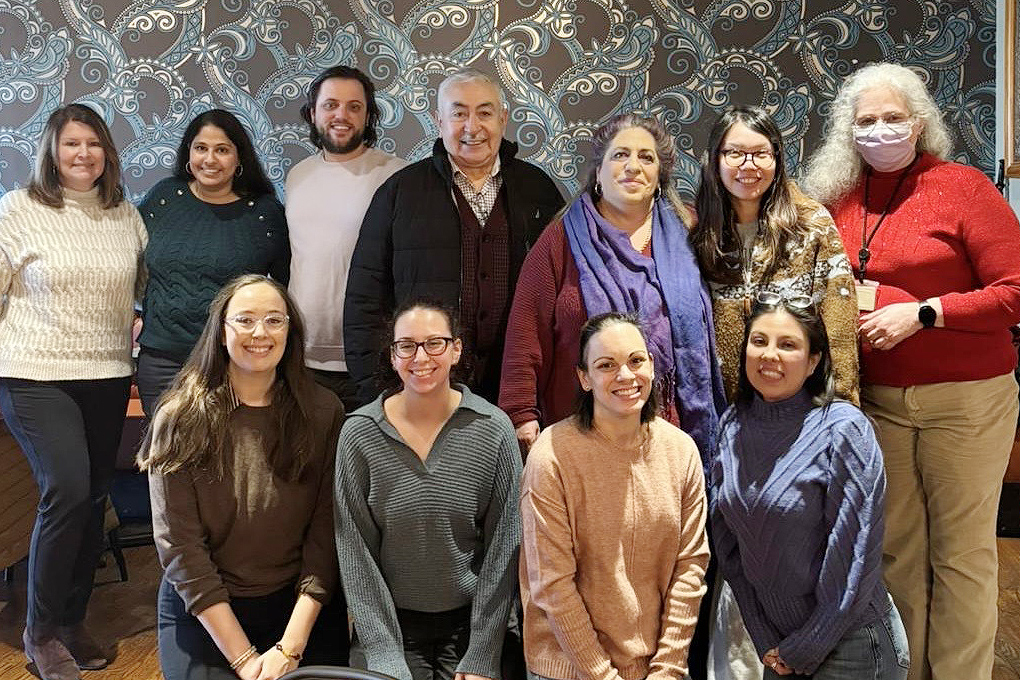Probation officers—who supervise nearly 4 million people across the United States—are among the most visible faces of the criminal legal system (CLS). A new study led by UConn School of Social Work Assistant Professor Sukhmani Singh focuses on how probation officers experience their roles within CLS.
Published in Feminist Criminology, the study draws on in-depth interviews with 27 frontline and supervisory probation officers in a large northeastern city, 71% of them women and 67% Black. Singh and colleagues from the University of Reading, New York University, and Vanderbilt University used intersectionality as their framework to analyze the perspectives of the largest and most diverse group of workers within the criminal legal system. They considered how race, gender, and occupational roles shaped officers’ experiences.
Their findings reveal three themes:

1. Probation as “minor.”
Officers consistently described their role as marginalized compared to the authority of judges, prosecutors, and police. They reported feeling undervalued, underpaid, and often dismissed as “just social workers,” even though their jobs required higher credentials and carried significant risks.
Unlike police, probation officers can search a home, car, or person without a warrant; require clients to share private and personal information about their employment, relationships, and finances; file probation violation reports; and maintain regular contact with the probationers.
Yet their authority was often minimized. “I don’t think they necessarily see us as law enforcement people,” said Janice, a Black frontline officer. “I think they see us more as social work … I don’t think the respect is always there.” Another officer, Kenneth, echoed that many people in the community “see us as social workers” and even “overall law enforcement thinks we’re the hug-a-thug.”
In the larger context of the CLS, all probation officers conveyed they did not have power to produce systemic change, as that power largely resided with judges and district attorneys, Singh explains. “In addition, probation officers also shared feeling subordinate to police officers. They felt the community accorded them less authority than they did the police.”
2. The criminal legal system is a manifestation of societal racial oppression
The probation officers were also the most demographically diverse group with in the criminal legal system workforce. Across race and gender, all officers identified the system as an extension of societal racism. They pointed to disproportionate policing of Black and Brown communities, racialized sentencing disparities, and the reality that—even as probation officers—they themselves remained vulnerable to racial profiling.
“Even as a probation officer, we’re all very much aware that we’re Black first,” said Melissa, a Black frontline officer, describing how she still worries during traffic stops. “I hope that I make it to my badge to show [the police officer].”
A Black supervising officer, Marcia, highlighted how judges—who hold the most power and are disproportionately white—are disconnected from over-surveilled communities. As a result, she said, “the punishment [decreed by the judge] don’t fit the crime … these judges, some of them, don’t care; they’re like you don’t live in my neighborhood, I don’t care.
3. The Limits of Diversification
The team’s research also highlights a broader lesson: workforce diversification alone is not enough to make the criminal legal system more just.
“Systems reproduce themselves—that’s the point,” Singh says. “We’ve seen diversification in the criminal legal system, but it’s happened mostly in the service sector, in the roles that deal directly with poor clients and communities of color. Those jobs carry lower pay and prestige, even though they demand the most intensive labor. Meanwhile, power remains concentrated in the judiciary and prosecutorial ranks, which are overwhelmingly white.”
We’ve seen diversification in the criminal legal system, but it’s happened mostly in the service sector, in the roles that deal directly with poor clients and communities of color. Those jobs carry lower pay and prestige, even though they demand the most intensive labor.
“Diversification can be one answer to white supremacy,” she says. “But if it only happens at the lowest rungs of a system, then the structures of oppression remain intact. We need to ask: what kind of society do we want to live in?”
Probation magnifies these contradictions. Women of color now make up a large share of the workforce, yet they are concentrated in undervalued positions and remain most exposed to the system’s inequities. When probation was dominated by white men, Singh notes, the job carried more money, status, and authority.
Listening closely to probation officers, Singh argues, helps reveal how systems sustain themselves. “Diversification alone isn’t transformation—and that’s as true for the criminal legal system as it is for any other institution.”
Advocating for their Clients
Within this landscape, Singh’s team found gendered differences in how officers navigated their roles. Many women officers practiced what the researchers call “resistant care”—advocating for clients, providing transparency about rights, and connecting people to resources—as a way to blunt the system’s harms.
“These officers know they don’t have the power to change structural racism in the system,” Singh says, “but they try to humanize probation in small ways for the people they supervise. At the same time, they recognize that their own labor is undervalued in ways that reflect the racialized and gendered hierarchy of the system itself.”
Elizabeth, a White frontline officer, noted that probation work today is less punitive than it once was. “It’s always been very personal—it’s almost a mission for me,” she said. “Our clients are our fathers, our mothers, our aunts, our uncles…most of the time we have connection with these folks and we let them come into our circle.”
Alicia, a Latina officer, emphasized to clients that “I’m not here to find you guilty…I am here to do the supervision,” while making sure judges knew when clients were succeeding. Sylvia, a Native American officer, said her role was to “plant a seed” through one-on-one advocacy: “I’ve helped people who are 40, 50 get their GED. No one ever encouraged them to do so. So, I think person-to-person you can affect change and hopefully…they pay it forward.”
Sukhmani Singh is an applied developmental-community psychologist and an affiliate faculty member of UConn’s Center on Community Safety, Policing and Inequality at the School of Law. Broadly, her research is anchored in intersectional and decolonial frameworks and her scholarship aims to advance systems change, particularly at the nexus of the juvenile legal and education systems. Singh is a mixed-methods researcher who deeply values and engages in critical participatory research as an important praxis that lifts the lived experiences of those most impacted (e.g., systems-impacted girls of color) by unjust systems to advance structural solutions to social injustice.


